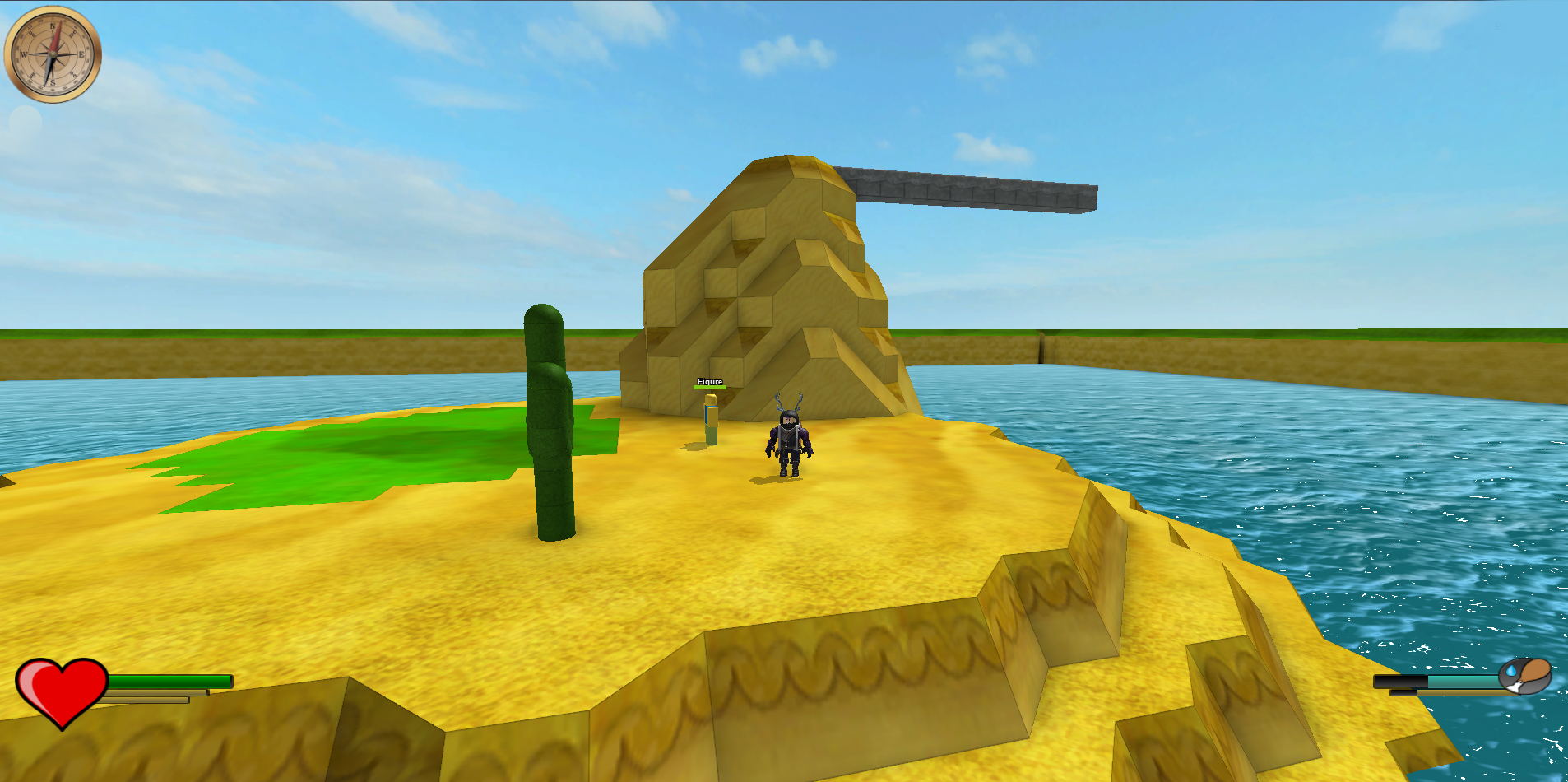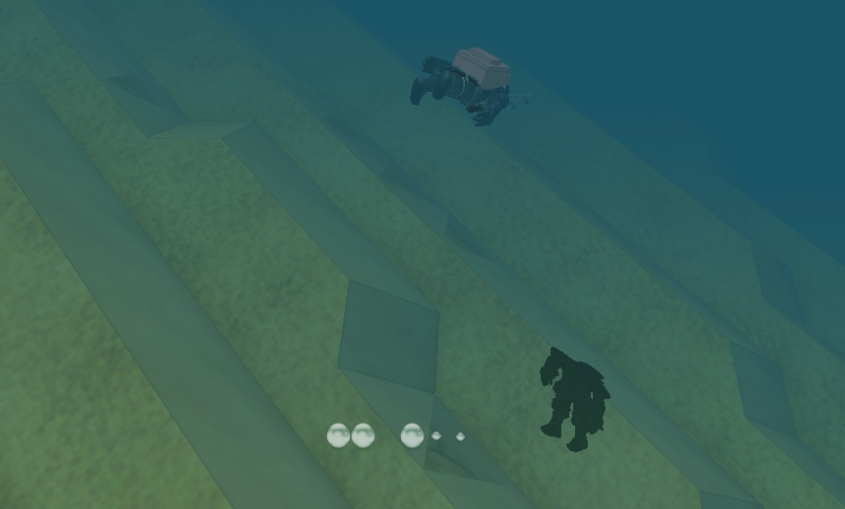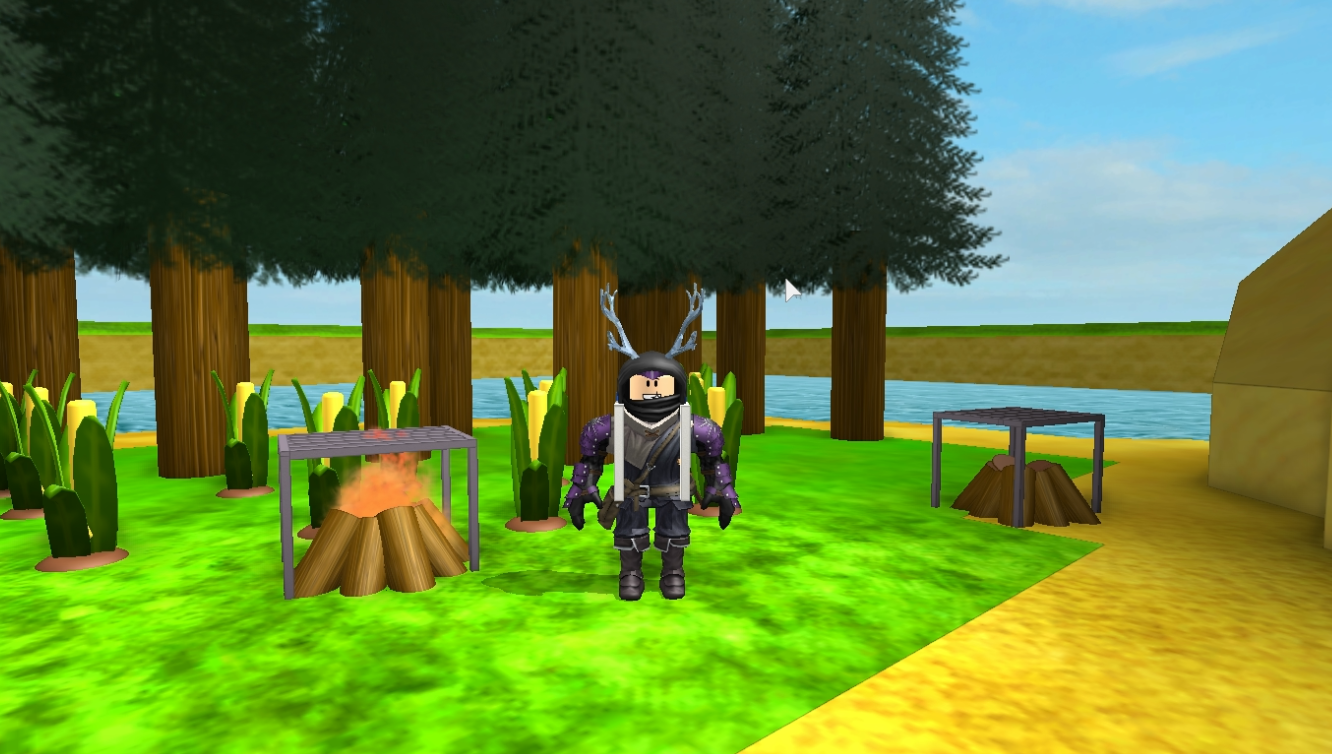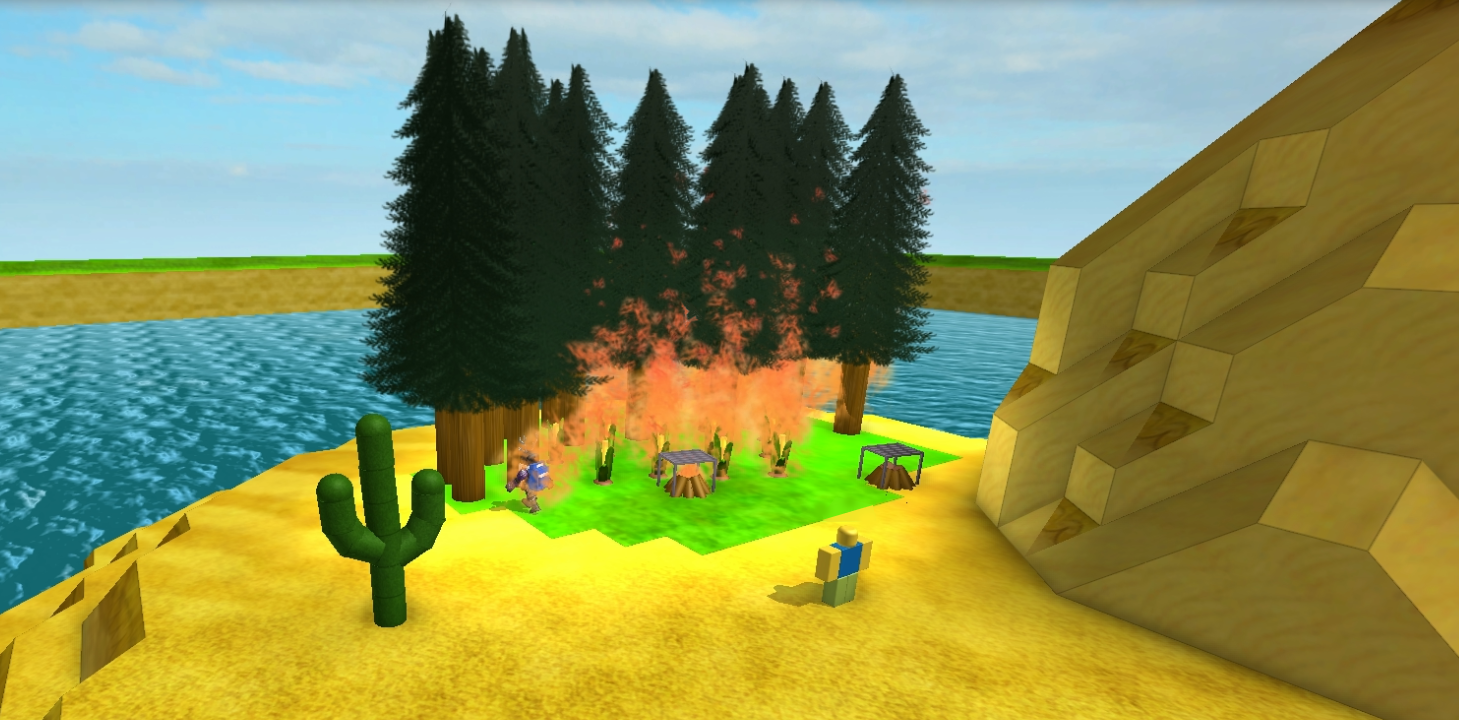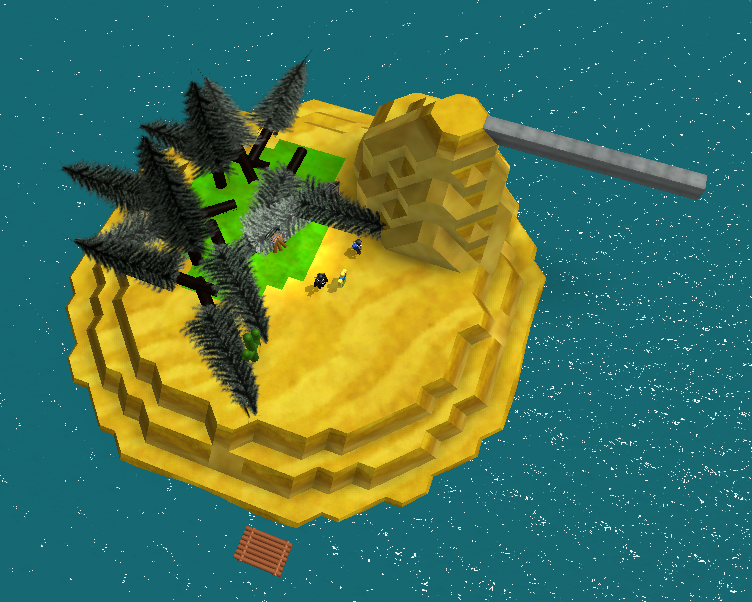Blog Archive
ROBLOX Survivor is a staple of the survival genre that many consider to be a classic. The game features a robust and deep wilderness survival engine, encouraging exploration, scavenging, hunting–basically all the things you would need to do in real life to stay alive in the wild. With nearly two million plays, and a wide range of updates since its release, Jojomen56 recently decided it was time to start developing the official sequel. I got the chance to spend some time inside ROBLOX Survivor 2.0, which is in Paid Access beta for 40 ROBUX. Though the level itself is extremely small, the amount of innovative gameplay mechanics it comes packed with is staggering. Jojomen56 has implemented numerous advanced features, and created a dynamic environment that is reactive in nature. First, have a look at this:
If this looks like a simple physical layout, that’s because it is. But simple, particularly in this case, is far from a bad thing. In fact, what you’re looking at is 85% of the work. Allow me to explain.
The key behind developing this sequel is making functionality priority number one. Everything you see in the image above was placed there intentionally. The elevated rocks are where they are to test the new fall-damage script. There’s also a bone-crunching sound effect he’s implemented, a constant heart thump that fluctuates depending on your state of being, and a splash sound for when you nose dive off the diving board.
Speaking of which, you’ll also notice that the test island of Survivor 2.0 is surrounded by water. This is where things get extremely interactive, while staying true to many of the mechanics from the first game. Water will play an important role in keeping yourself alive, and will serve numerous purposes in this game. There’s plenty of caverns to explore under the water, though Jojomen56’s custom oxygen GUI will only let you swim for the length of a large breath.
The small island you see above has enough real estate to test the game’s expanding survival mechanics, which all weave together to create even more unexpected and exciting gameplay. I started the game with a few spruce tree seeds, corn seeds and a bunch of rocks . I planted the trees and some corn seeds then forged a bucket at the cost of five rocks. I then had two choices: I could siphon water from the cactus by double clicking it, or simply head to the shore and fill the bucket there (which was easy to do with a handy moving GUI!).
With my full bucket of water, I watered my seeds and they grew into large trees and stalks of corn. My hunger meter was beginning to red line at this point, so I harvested the corn and had a quick bite to eat (and planted a few more seeds for later). I started shaking the trees by walking up to them and double clicking, and more seeds fell out, as well as twigs and a spider, all of which I added to my inventory (sans the spider, who was just hanging around staring at me). The twigs would prove to be helpful later when I built a fire, but we’ll get to that.
Now it was time to start looking for more materials–I wanted to build a fire place, but would need far more tools than I had available in my inventory. I gathered some more wood by planting more trees and shaking them to harvest their fallen branches. I wandered the perimeter of the island and spent some time underwater to look for anything I could salvage. Because the level is incomplete, Jojomen56 allows you to auto-grant yourself materials so you can experiment with the forging system to its fullest extent. Once I gave myself the proper parts, I built a roaring fire.
See where this is going? The map is reactive and grounded in reality. Build a bucket, fill it with water. Use water to grow wild life or put out any fire you create. Eat to stay alive. Watch your footing and don’t fall from high up, or you’ll injure yourself. I felt compelled to constantly problem-solve and explore–and can’t wait to see how all of these features could play out in a massive multiplayer map full of creatures to hunt, items to collect, and tools to forge together. Because Jojomen56 procedurally generates his terrain maps each and every time you play an instance of Survivor, he’s gotten the tough parts–the scripting parts–out of the way.
Any story worth telling has a satisfying ending–well, not any story in my case. When standing proudly by my roaring fire I thought I had heard something in the distance. I got up to investigate and stepped a little too close to the fire I had built and, uhm, well, I caught fire. I didn’t expect this to happen (even though Jojomen56 had warned me to be careful around fire places during our conversation), so I frantically ran towards the water, as my heart beat sound effects kept getting louder and faster. In my frantic rush to the shore I ran through my field of vegetation, and then, well, it caught fire too.
In less than three seconds I had managed to set myself and everything I had created on fire.
When I asked Jojomen56 about the changes he’s implemented or will implement in the near future, he gave me this list:
- Compass GUI
- Shovel/pick-axe
- Fall damage
- Oxygen meter
- Torch placing/lighting/extinguishing
- Creating tools with multiple materials
- Making tools have health
- Create a time limit to create fires, tents, chests, and wells
- Server-shutdown after updates to allow space for new servers
- Trackable player statistics
- Paddles, rafts, ores
- Survivor-exclusive character animations
- Tree shaking
- Falling animations
The ambitions of this project are sky high, but Jojomen56 is systemically knocking out features one at a time in order to ensure that the finished project will absolutely (wait for it) rock. We’ll be keeping an eye on this one.

